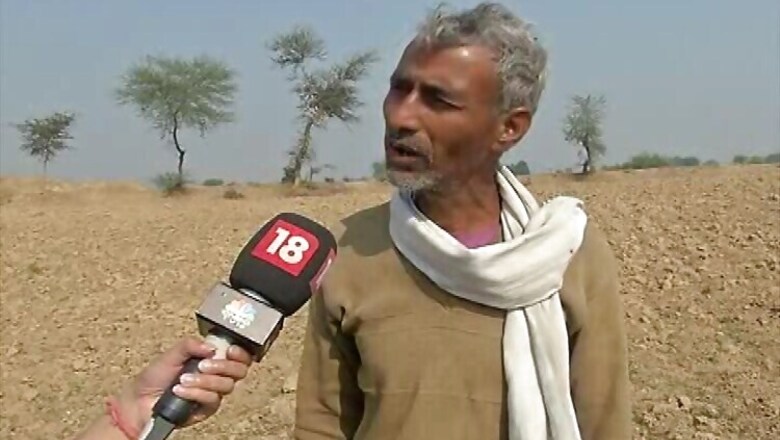
views
People in the region of Bundelkhand, which was once part of a fertile belt that carried India's agri-economy, are struggling with hunger.
Barren parched lands can be clearly seen across the region of Bundelkhand. Farmers say these are good cultivable land and if it gets proper irrigation facilities then chana, pulses, rice and wheat can be cultivated. But consecutive droughts and unseasonal rainfall has pushed farmers in a vicious cycle of loan, sowing and a failed crop.
55-year-old Raja Babu from Karari village in Chitrakoot district is a living testimony to the hardships the farmers are facing. Ever since the droughts began, Raja Babu has consistently experimented with different crops but failed everytime.
After five years, he resorted to Sesame seeds or Til, a crop that requires minimal water, and one that the government promotes as a monsoon crop for drought-prone regions. This too has failed and the only thing that's grown consistently is his debt burden.
Deficient monsoons and unseasonal rainfall have put paid to the entire Kharif crop in the region and the government's relief measures have not provided much support because it hasn't trickled down completely.
Official figures indicate that only 50 per cent of the compensation for crop losses has been distributed to farmers and that which has, is nowhere close to enough.
So far, only 12-13 per cent of the winter crop has been sown in the region. Farmers say the government bears as much responsibility for the situation as the rain.
10 years ago, 87 per cent of the land area in this region was dependent on rainfall that has not changed even after seven years of droughts. Most of the money set aside for relief measures for Bundelkhand's farmers in 2009 has not reached them.
Poor irrigation infrastructure aside, rampant illegal sand mining in the river beds has intensified the drought situation in these areas and farmers are choosing to quit farming rather than to live in hope.




















Comments
0 comment